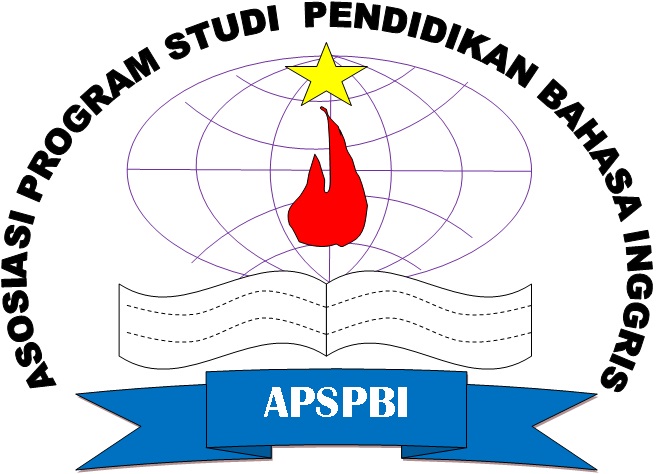A Comparative Analysis of English Learning Motivation between the Rural and Urban Students
Abstract
The objectives of this research are to find out (1) the motivation of the rural and urban students (2) the types of motivation influence the rural and urban students (3) the factors influence the motivation of the rural and urban students (4) the effective ways to foster the motivation of the rural and urban students. This research employed descriptive qualitative research design. The subject of this research is the ninth grade students of MTs Muhammadiyah Lempangang as urban students and the ninth grade students of MTs N 4 Bulukumba as rural students. The number of participants is 20 students. The result of research showed that (1) all of the informants of MTs N 4 Bulukumba as a rural area are motivated in Learning EFL. It is similar with the informants of MTs Muhammadiyah Lempangang as an urban area. They are also motivated. Both of areas are different in the level of motivation(2)the types of motivation dominantly influence in the rural students are both of integrative and instrumental motivation whereas in the urban students are instrumental motivation(3)the similarity between both of students area either internal or external factors are the expectancy, the teachers and the activities and materials whereas the difference from both of them are the relevance, the goal setting and the school environment(4)the effective ways to foster the motivation of the rural students in learning EFL is the teacher always trains the pronunciation of the vocabulary whereas the urban students is the teacher should have more practice activity in learning and teaching process.
Keywords
Full Text:
PDFReferences
Achelles, C. M., & Finn, J. D. (1990). Answers and Questions about Class Size: A Statewide Experiment. American Educational Research Journal, 27(3), 2-20.
Ames, C. 1992. Classrooms: Goals, structures and students motivation. Journal of Educational Psychology, 84, 261-271.
Burke, W. M. 2004. Getting the buggers into languages: How to motivate students to speak, listen, read and write in a modern foreign language.Literacy, 38, 159–160.
Bradford, A. (2007). Motivational orientations in under-researched FLL contexts: Findings from Indonesia. RELC Journal, 38(3), 302-323.
Bridgeland, J. M., DiIulio, J. J., & Morison, K. B. (2006).The silent epidemic: Perspectives of high school dropouts. Washington, D.C: Civic Enterprises, LLC.
Brewer, E. W., & Burgess, D. N. (2005).“Professor’s role in motivating students to attend class”.Journal of Industrial Teacher Education, 42(3), 24.
Bylund, R. A., & Reeves, E. B. (2005).Are Rural Schools Inferior to Urban Schools? A Multilevel Analysis of School Accountability Trends in Kentucky.Rural Sociology, 70(3), 360-384.
Cohen, L. Manion, L. & Morrison K. (2000).Research Methods in Education.London: RoutledgeFalmer.
Cook, V. (2000). Linguistics and second language acquisition. Beijing: Foreign Language Teaching and Research Press and Macmillan Publishers Ltd.
Crookes, G., & Schmidt R.W. 1991. Motivation : Reopening the research agenda. Language Learning, 41(4), 469- 512.
David, M. & Sutton C.D. (2004). Social Research the Basics. London: SAGE Publications.
Deci, E. L., & Ryan, R. M. 2000.Intrinsic Motivation and Self-Determination in Human Behavior. New York: Plenum.
Dornyei, Z. 1990. Conceptualizing motivation in foreign language learning. Language Learning 40, pp. 46-78.
. 2001. Teaching and Researching Motivation. England: Pearson Education Limited.
. 2003. Attitudes, orientation, and motivations in language learning: advances in theory, research, and applications. Language Learning, 53, 3-32.
. 1994. Motivation and motivating in the foreign language classroom. The Modern Language Journal, 78,3, pp. 273-284.
. 1998. Motivation in second and foreign language learning. Language teacher 31, pp. 117-135. Cambridge: Cambridge University Press.
Dornyei, Z., & Ushioda, E. (2009).Motivation, language identity and the L2 self. Bristol: Multilingual Matters.
Deewes, S. (1999). Improving Rural School Facilities for Teaching and Learning. Rural Education and Small Schools Charleston, WV.(ERIC Document Reproduction Service No. ED 438 153)
Domenech, D.A. (2006). City-Country. American School Board Journal, 28-29.
Ediger, M. (2000).The Pupil in the Rural School. Journal of Instructional Psychology, 26(4), 280-284.
Ellis, R. 1997. Second language acquisition. Oxford: Oxford University Press.
Fullwood, H., Gates, G. Pancake, A., & Schroth, G. (2001).Rural and Urban America. Rural Special Education Quarterly, 20, 1-12.
Fernald, L.D., & Fernald, P.S. (2005).Munn’s Introduction to psychology. New Delhi: AITBS Publishers.
Feldman, R.S. (2004). Understanding Psychology. New Delhi: McGraw-Hill. Fernald, L.D., & Fernald, P.S. (2005).Munn’s Introduction to psychology. New Delhi: AITBS Publishers.
Gardner, R. C. (1999). Correlation, causation, motivation, and second language acquisition. Canadian Psychology, 41(1), 10-24.
. 1985. Social Psychology and Second Language Learning: the role of attitudes and motivation. London: Edward Arnold.
Ghenghesh, P. (2010). The motivation of L2 learners: Does it decrease with age? English Language Teaching, 3(1), 128-141.
Gray, D.E. (2004). Doing Research in the Real World. London: SAGE Publications.
Greenwald, R., Hedges, L.V., & Laine, R. D. (1996).The Effect of School Resources on Student Achievement. Review of Educational Research, 66(3), 361-372.
Kikuchi, K. (2009). Listening to our learners' voices: What demotivates Japanese high school students? Language Teaching Research, 13(4), 453-471.
Lamb, M. (2007). The impact of school on EFL learning motivation: An Indonesian case study. TESOL Quarterly, 41(4), 757-780.
Liando, N. V. F., Moni, K. B., & Baldauf, J. R. B. (2005).Student motivation in learning English as a foreign language in an Indonesian context. In J.NAEP (2007).Retrieved October 5, 2008 from U.S. Census Bureau Website: http://www.census.gov/
National Research Council. (2004). Engaging schools: Fostering high school students' motivation to learn. Washington, DC: Author. Retrieved from http://books.nap.edu/openbook.php?record_id=10421&page=27
Rueda, R., & Chen, C. B. 2005.Assessing Motivational Factors in Foreign Language Learning: Cultural Variation in Key Constructs. Educational Assessment, 10(3), 209-229. http://dx.doi.org/10.1207/s15326977ea10034
Ruesch, A. (2009). Student and teacher perception of motivational strategies in the foreign language classroom. Brigham Young University. Unpublished Master Thesis.
Rehman, A. 2014.The Role of Motivation in Learning English Language for Pakistani Learners. International Journal of Humanities and Social Science. Vol. 4 No. 1
Robins, R.W., et al. 1997. Handbook of research methods in personality psychology. New York: Guilford Press.
Siswidyatmi, et al.2019. Increasing Motivation and Achievement in Learning English of Eleventh Grade Science-3 Students of State Senior High School 5 Magelang Using Problem Based Learning.Metathesis: Journal of English Language, Literature, and Teaching Vol 3 No 1
Sugiyono. (2010). Metode Penelitian Kuantitatif Kualitatif & RND. Bandung: Alfabeta
Unrau, N. (2006). Motivation and Its Relationship with Reading Achievement in an Urban Middle School. The Journal of Educational Research, 81-100.
Park, C. C. (2000). Learning style preferences of Southeast Asian Students. Urban Education, 35(3), 245-268.
Puspitasari, D.A. (2019). Exploring English Language Teaching Method of the Second Grade Students at SMA MBS Yogyakarta. Metathesis: Journal of English Language, Literature, and Teaching Vol 3 No 2
Williams, D. T. (2003).Rural Routes to Success. Education Leadership, 61(3), 66-70.
Williams, M., & Burden, R. L. 1997.Psychology for Language Teachers: A Social Constructivist Approach. Cambridge: Cambridge University Press.
Young, D. J. (1998). Rural and Urban Differences in Student Achievement in Science and Mathematics: A Multilevel Analysis. School Effectiveness and School Improvement, 9(4), 386-412.
(2002). Technology Takes On Rural Alaskan Schools. THE Journal, 4, 52-54.
DOI: https://doi.org/10.31002/metathesis.v3i2.1740
Refbacks
- There are currently no refbacks.

This work is licensed under a Creative Commons Attribution-ShareAlike 4.0 International License.
Metathesis: Journal of English Language, Literature, and Teaching is published by English Education Department, Faculty of Teacher Training and Education, Universitas Tidar, Magelang, Indonesia in collaboration with Asosiasi Program Studi Pendidikan Bahasa Inggris Se-Indonesia (APSPBI)
ISSN: 2580-2712 (print) and 2580-2720 (online)
Jalan Kapten Suparman 39 Magelang, Jawa Tengah, Indonesia 56116
Phone (0293) 364113 Fax (0293) 362438













